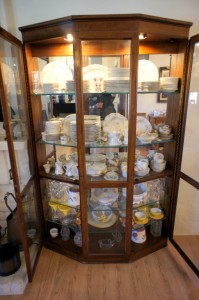 Estate sales come in all shapes and sizes. When a client is liquidating the contents of their own property, they are often more aware of the items that may be tucked away, as well as where they may be hidden. However, some estate sales also come about as a result of real estate agents having acquired a property that was left with all the contents intact. In order to either resell or renovate the home, these goods must of course be removed, and that task frequently falls upon us at Heritage Estate Sales.
Estate sales come in all shapes and sizes. When a client is liquidating the contents of their own property, they are often more aware of the items that may be tucked away, as well as where they may be hidden. However, some estate sales also come about as a result of real estate agents having acquired a property that was left with all the contents intact. In order to either resell or renovate the home, these goods must of course be removed, and that task frequently falls upon us at Heritage Estate Sales.
What is always interesting to us about many of the older residences or homes that have been lived in by a single inhabitant for many years, is the amount of valuable and fascinating items that have accumulated. Crystal is strong commodity that will be found in older homes, and identifying what is real and what is reproduction can be an intricate process.
What’s In A Name
When most people think of crystal, they also think of the manufacturers of Waterford and Swarovski. True leaded crystal that is not a name production is also quite valuable, and this type is frequently found on chandeliers, doorknobs, and sometimes as inserts in stained glass windows. Modern crystal which is not as collectible is called leaded glass, and while a similar process is still used to make it, it does not contain the same mineral content, and it is neither as heavy or as durable as real leaded crystal.
Some pieces that are thought to be crystal may only be faceted glass. Although the weight of an item and how scratch resistant it is can be two ways to tell if it is real, the more accurate way to tell is to look at the refraction quality. This means how fully a spectrum of white light is separated when it passes through the object. While faceting can somewhat replicate the effect, the higher lead and barium content in leaded crystals will create a more distinct and complete separation of colors from the light. Thus, even an antique looking doorknob can be worth more than just the aesthetic appeal.
Looking For Clues
Of course, Waterford sculptures and curios can be truly valuable finds. As with and famous manufacturer, there will always be reproductions that can pass as the true thing to the untrained eye. Identifying a Waterford piece will sometimes require a closer look at the piece in order to find the acid etching of the name. This stamp is not always located in on the base or in a generalized location, but can be hidden anywhere on the item. The best way to find this mark is to hold the item up to the light and examine it fully. The etching may appear quite light, as it is actually inside the crystal piece so it cannot be removed, but it will distinctly spell the Waterford name.
At Heritage Estate Sales, this is just one of the parts of out appraisals that we look forward to. Finding hidden treasures is always exciting for us and for our clients. A visit to our website will illustrate some of the many antiques and collectibles that have come our way, and we always ensure that our clients are fully knowledgeable of just what their estate has to offer.
